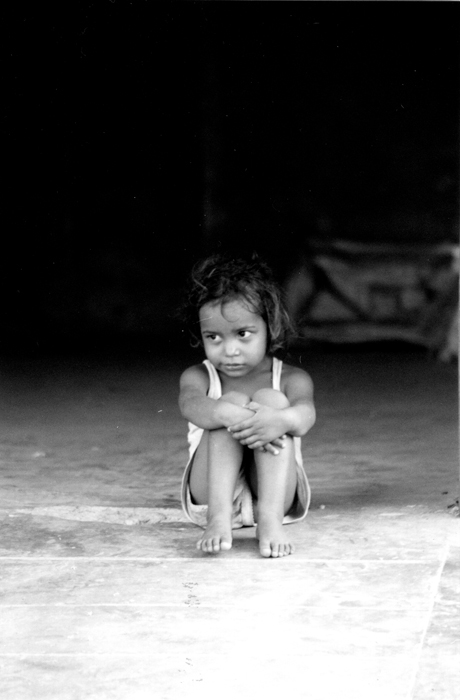Towards a psychosocial and cultural definition of Mexican homeless girls: a qualitative approach
Abstract
Homeless women are one of the most vulnerable groups worldwide since they are victims of labor and sexual exploitation, abuse, discrimination and marginalization at a higher rate than the rest of the population. However, currently, Mexico lacks of an accurate definition of such social group, and their characteristics as well as the magnitude and dimensions of the phenomenon are only partially and superficially known. The purpose of this research was to develop and validate a typology of homeless women living in Mexico City. To fulfill this purpose, 300 in-depth interviews were conducted and examined thoroughly with a systematic analysis of the content. The main results indicate that homeless women constitute a social group immersed predominantly in circumstances of violence, marginalization, poverty and social exclusion. Also, this collective includes two subgroups: women at risk of homelessness and women emergency sheltered, unsheltered or absolutely homeless and living in places not intended for human habitation. With this typology it is possible to define, characterize and distinguish homeless women. In addition, the phenomenon can be known with more certainty and accuracy enabling, thus, the design of effective treatment strategies.Downloads
References
Canadian Homelessness Research Network (2012) Canadian Definition of Homelessness. Recuperado de www.homelesshub.ca/CHRNhomelessdefinition/.
Castro-Cavero, R. (2008). Los niños de la calle en Bolivia. Spain: Entinema.
Children’s Rights Network in Mexico. (2005). Mexican childhoods: faces of the inequality. Shadow Report. Mexico: Committee on the Rights of the Child of United Nations 1999-2004.
Coker, T., Elliott, M., Kanouse, D., Grunbaum, J., Gilliland, J., Tortolero, S., … Schuster, M. (2009). Prevalence, characteristics and associated health and health care of family homelessness among fifth-grade students. American Journal of Public Health, 99(8), 1446-1452.
Committe Opinion. (2013). Health care for homeless women. Obstetrics & Gynecology, 122(4), 936-940.
Denzin, N. & Lincoln, Y. (1994). Handbook of qualitative research. California, United States: Sage Publications.
Early, D. (2005). An empirical investigation of the determinants of street homelessness. Journal of Housing Economics, 14(1), 27-47.
Estévez, A. (2009). DAYA. El transitar de la maternidad callejera en la última década. Revista Iberoamericana sobre Infancia y Juventud en Lucha por sus Derechos, 1(1), 93-97.
Fait, D. (2008). Niñez en “riesgo” y políticas sociales. Argentina: Espacio Editorial.
González, E. (1996). Menores en desamparo y conflicto social. Spain: CCS.
Guerrero, P. y Palma, E. (2010). Representaciones sociales sobre educación de niños y niñas de calle de Santiago y Quito. Revista Latinoamericana de Ciencias Sociales, Niñez y Juventud, 8(2), 1025-1038.
Jabeen, Z. & Azra. (2013). A comparative study on mental health of street children living with their families and runaways from families. Indian Streams Research Journal, 2(12), 1-6.
Leñero, L. (1998). Los niños de la calle y en la calle. Problemática y estrategias para abordarla. Mexico: Academia Mexicana de Derechos Humanos.
McCarthy, M. & Thompson, S. (2010). Predictors of trauma-related symptoms among runaway adolescents. Journal of Loss and Trauma, 15, 212-227.
Melander, L. & Tyler, K. (2010). The effect of early maltreatment, victimization, and partner violence on HIV risk behavior among homeless young adults. Journal of Adolescent Health, 47(6), 575-581.
Nicholas, B. (2011). A qualitative investigation of the creation and use of social capital among Street children in Bucharest, Romania. (Doctoral dissertation, Ohio State University, USA).
Papalia, D., Olds, S. y Feldman, R. (2009). Psicología del desarrollo. De la infancia a la adolescencia. Mexico: McGraw-Hill.
Raffaellia, M., Koller, S., Reppold, C., Kuschick, M., Krum, F., Bandeira, D. & Simoes, C. (2000). Gender differences in Brazilian street youth’s family circumstances and experiences on the street. Child Abuse & Neglect, 24(11), 1431–1441.
Saewyc, E. & Edinburgh, L. (2010). Restoring healthy developmental trajectories for sexually exploited young runaway girls: fostering protective factors and reducing risk behaviors. Journal of Adolescent Health, 46(2), 180-188.
Scanlon, T., Tomkins, A., Lynch, M. & Scanlon, F. (1998). Street children in Latin America. British Medical Journal, 316(7144), 1596-1600.
Sociedad Mexicana de Psicología (2004). Código ético del psicólogo. Mexico: Trillas.
Thomas, S. (2007). State of the world’s street children: violence. Great Britain: Consortium for Street Children.
Thompson, S., Jun, J., Bender, K., Ferguson, K. & Pollio, D. (2010). Es-trangement factors associated with addiction to alcohol and drugs among homeless youth in three U.S. cities. Evaluation and Program Planning, 33(4), 418-427.
UNICEF (1989). Lineamientos para la aplicación de la guía metodológica para el análisis de situación de menores en circunstancias especialmente difíciles. Colombia: Gente Nueva.
UNICEF (1997). Estado mundial de la infancia. Nueva York, USA: División de Comunicaciones, UNICEF.
Vélis, J. (1995). Blossoms in the dust. Street children in Africa. Francia: UNESCO.
Wenzel, S., Leake, B., Anderson, R. & Gelberg, L. (2001). Utilization of birth control services among homeless women. American Behavioral Scientist September, 45(1), 14-34.

The works published in this journal are subject to the following terms:
1. The Publications Service of the University of Murcia (the publisher) retains the property rights (copyright) of published works, and encourages and enables the reuse of the same under the license specified in paragraph 2.
© Servicio de Publicaciones, Universidad de Murcia, 2022
2. The works are published in the online edition of the journal under a Creative Commons Reconocimiento-CompartirIgual 4.0 (legal text). You can copy, use, distribute, transmit and publicly display, provided that: i) you cite the author and the original source of publication (journal, editorial and URL of the work), ii) are not used for commercial purposes, iii ) mentions the existence and specifications of this license.
This work is licensed under a Creative Commons Attribution-ShareAlike 4.0 International License.
3. Conditions of self-archiving. Is allowed and encouraged the authors to disseminate electronically pre-print versions (version before being evaluated and sent to the journal) and / or post-print (version reviewed and accepted for publication) of their works before publication, as it encourages its earliest circulation and diffusion and thus a possible increase in its citation and scope between the academic community. RoMEO Color: Green.















